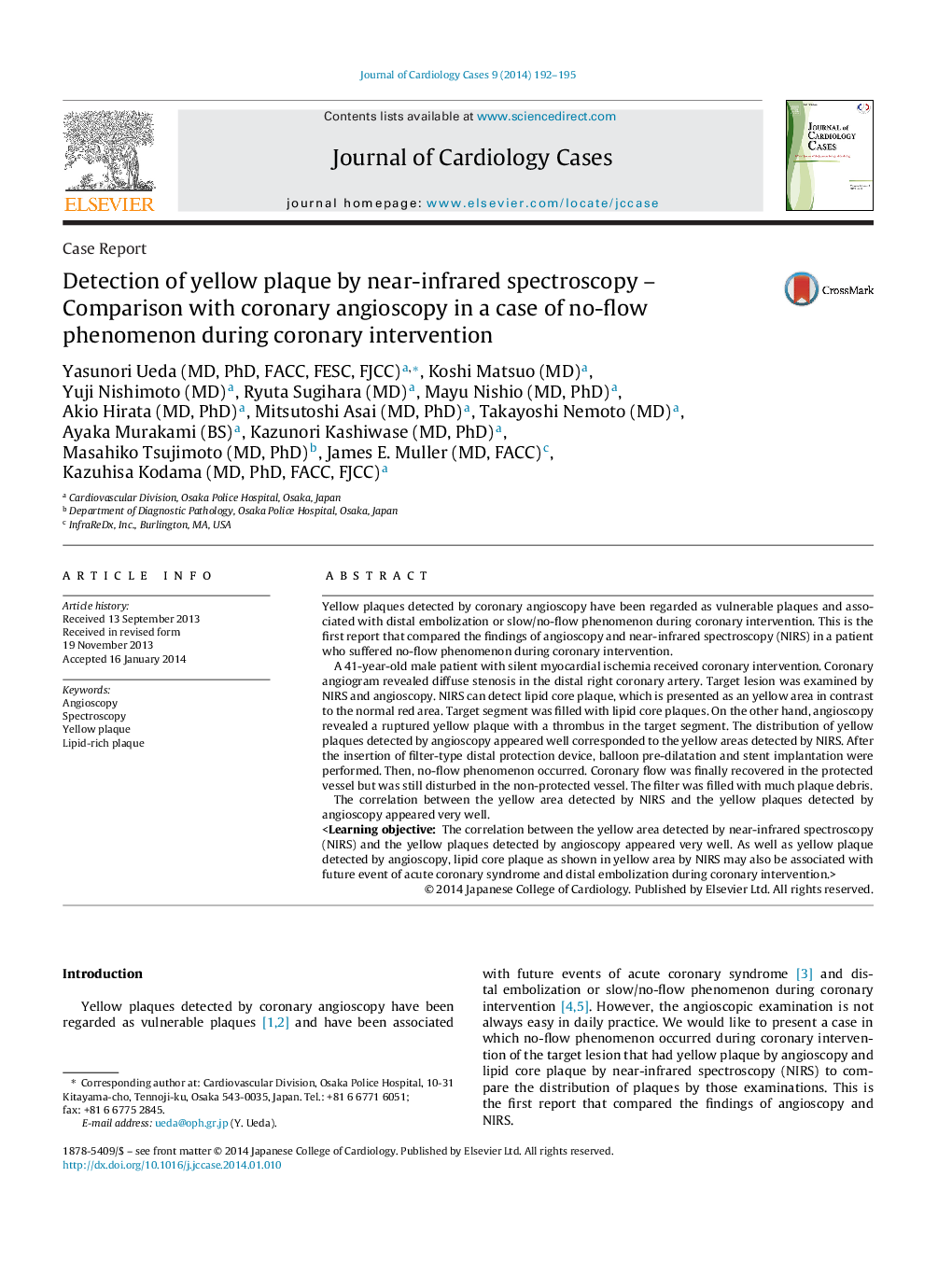| Article ID | Journal | Published Year | Pages | File Type |
|---|---|---|---|---|
| 5984609 | Journal of Cardiology Cases | 2014 | 4 Pages |
Yellow plaques detected by coronary angioscopy have been regarded as vulnerable plaques and associated with distal embolization or slow/no-flow phenomenon during coronary intervention. This is the first report that compared the findings of angioscopy and near-infrared spectroscopy (NIRS) in a patient who suffered no-flow phenomenon during coronary intervention.A 41-year-old male patient with silent myocardial ischemia received coronary intervention. Coronary angiogram revealed diffuse stenosis in the distal right coronary artery. Target lesion was examined by NIRS and angioscopy. NIRS can detect lipid core plaque, which is presented as an yellow area in contrast to the normal red area. Target segment was filled with lipid core plaques. On the other hand, angioscopy revealed a ruptured yellow plaque with a thrombus in the target segment. The distribution of yellow plaques detected by angioscopy appeared well corresponded to the yellow areas detected by NIRS. After the insertion of filter-type distal protection device, balloon pre-dilatation and stent implantation were performed. Then, no-flow phenomenon occurred. Coronary flow was finally recovered in the protected vessel but was still disturbed in the non-protected vessel. The filter was filled with much plaque debris.The correlation between the yellow area detected by NIRS and the yellow plaques detected by angioscopy appeared very well.
